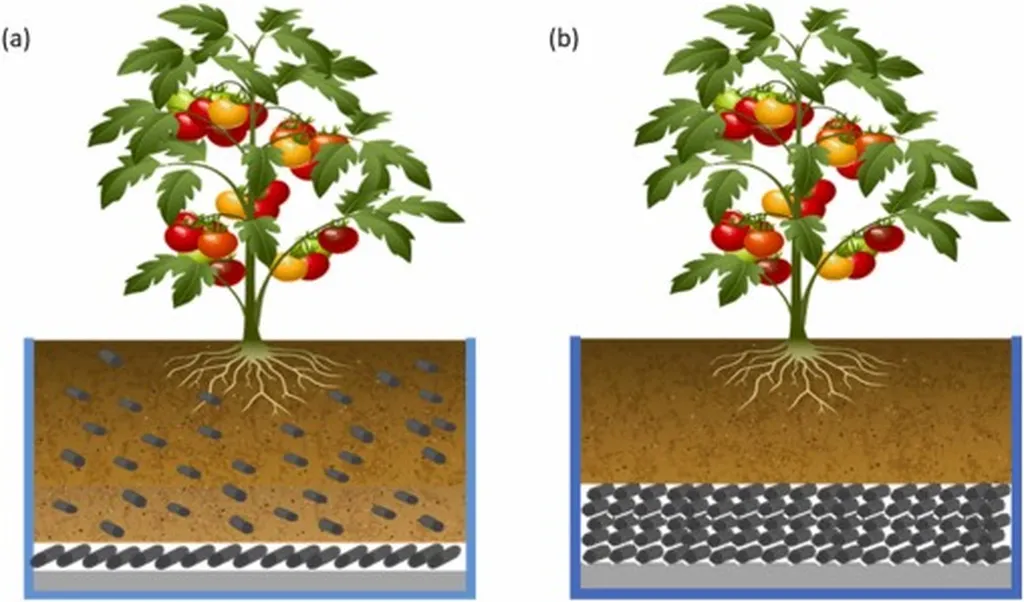In the heart of bustling cities, a quiet revolution is taking place. Rooftops, once mere expanses of unused space, are being transformed into productive farms, offering a glimmer of hope for sustainable urban living. A recent study published in the journal *Environmental Microbiome* (translated to English as *Environmental Microbiome*), led by Miguel de Celis from the Department of Soil, Plant and Environmental Quality at the Institute of Agricultural Sciences (ICA-CSIC), sheds light on how the right organic substrates can boost tomato growth in these urban farms, with significant implications for the energy and agricultural sectors.
The study, conducted in an open-air rooftop farming setup, explored the influence of different organic substrates on tomato plants and their associated microbial communities. The researchers evaluated combinations of peat with a high quantity (50% of volume) of compost derived from different feedstocks—seaweed biomass or coffee byproducts—and how blending with biochar alters these compositions.
De Celis and his team found that the properties of the substrates were primarily defined by the compost feedstocks. While biochar blending had a minor influence on substrate composition, it notably enhanced tomato yield. “We observed that alternative substrates, differing from peat, showed higher phosphorus content, pH, and electric conductivity,” de Celis explained. “This had a direct impact on the microbial communities and, consequently, on the tomato plants’ growth and yield.”
The study revealed that compost feedstock had a greater impact on microbial communities than biochar blending. Although alternative substrates presented higher bacterial diversity than peat, the taxonomic composition was similar across alternative substrates, indicating functional redundancy in the bacterial communities. The researchers identified specific microbes associated with each compost feedstock. For instance, bacteria like Acidibacter, Altererythrobacter, Amaricoccus, Luteitalea, Microvirga, Pedomicrobium, or Pseudorhodoplanes were strongly correlated with tomato yield when seaweed biomass was used as compost.
The implications of this research are profound. By harnessing natural resources and selecting the appropriate organic substrate, urban farmers can enhance plant-microbe interactions, leading to improved farm productivity and food quality. This approach not only promotes sustainable urban agriculture but also offers a solution for recycling organic waste and creating green spaces without consuming urban soils.
For the energy sector, the integration of biochar—a carbon-rich product obtained from the pyrolysis of biomass—into organic substrates presents an opportunity to reduce carbon emissions while improving soil health and crop yields. As de Celis noted, “Our results reveal the importance of using the appropriate organic substrate for enhancing the effectiveness of rooftop agriculture while increasing microbial diversity in urban unexploited areas.”
This research paves the way for future developments in urban agriculture, offering a blueprint for creating sustainable, productive rooftop farms that can contribute to food security and environmental sustainability. As cities continue to grow, the lessons learned from this study will be invaluable in shaping the future of urban living and agriculture.

